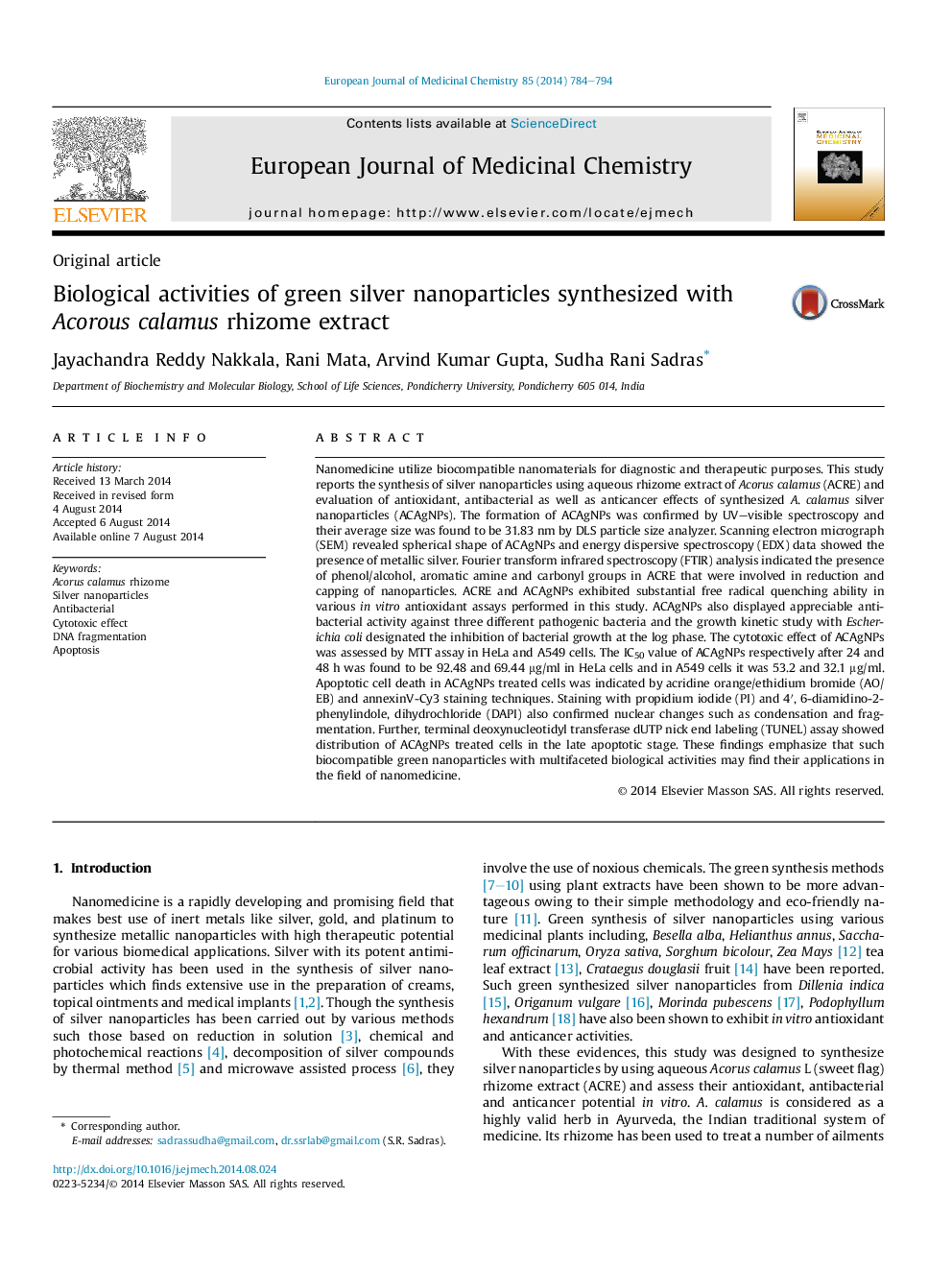| Article ID | Journal | Published Year | Pages | File Type |
|---|---|---|---|---|
| 1392360 | European Journal of Medicinal Chemistry | 2014 | 11 Pages |
•Acorus calamus rhizome extract was used to synthesize silver nanoparticles (ACAgNPs).•Spherical ACAgNPs with average size 31.86 nm.•ACAgNPs exhibited good antibacterial and antioxidant activities.•Induction of apoptosis by ACAgNPs in HeLa and A549 cells was confirmed by different staining techniques and TUNEL assay.
Nanomedicine utilize biocompatible nanomaterials for diagnostic and therapeutic purposes. This study reports the synthesis of silver nanoparticles using aqueous rhizome extract of Acorus calamus (ACRE) and evaluation of antioxidant, antibacterial as well as anticancer effects of synthesized A. calamus silver nanoparticles (ACAgNPs). The formation of ACAgNPs was confirmed by UV–visible spectroscopy and their average size was found to be 31.83 nm by DLS particle size analyzer. Scanning electron micrograph (SEM) revealed spherical shape of ACAgNPs and energy dispersive spectroscopy (EDX) data showed the presence of metallic silver. Fourier transform infrared spectroscopy (FTIR) analysis indicated the presence of phenol/alcohol, aromatic amine and carbonyl groups in ACRE that were involved in reduction and capping of nanoparticles. ACRE and ACAgNPs exhibited substantial free radical quenching ability in various in vitro antioxidant assays performed in this study. ACAgNPs also displayed appreciable antibacterial activity against three different pathogenic bacteria and the growth kinetic study with Escherichia coli designated the inhibition of bacterial growth at the log phase. The cytotoxic effect of ACAgNPs was assessed by MTT assay in HeLa and A549 cells. The IC50 value of ACAgNPs respectively after 24 and 48 h was found to be 92.48 and 69.44 μg/ml in HeLa cells and in A549 cells it was 53.2 and 32.1 μg/ml. Apoptotic cell death in ACAgNPs treated cells was indicated by acridine orange/ethidium bromide (AO/EB) and annexinV-Cy3 staining techniques. Staining with propidium iodide (PI) and 4′, 6-diamidino-2-phenylindole, dihydrochloride (DAPI) also confirmed nuclear changes such as condensation and fragmentation. Further, terminal deoxynucleotidyl transferase dUTP nick end labeling (TUNEL) assay showed distribution of ACAgNPs treated cells in the late apoptotic stage. These findings emphasize that such biocompatible green nanoparticles with multifaceted biological activities may find their applications in the field of nanomedicine.
Graphical abstractFigure optionsDownload full-size imageDownload as PowerPoint slide
